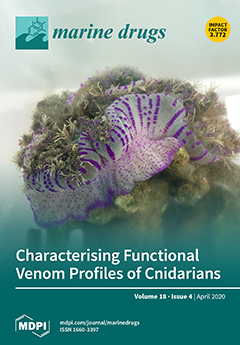Ilamycins are cyclopeptides with novel structures that have been isolated from different
Actinomycetes. They showed strong anti-tuberculosis activity and could serve as important anti-tuberculosis drug leads. The functions of the pre-tailoring and the post-tailoring genes in the biosynthesis of ilamycins have been
[...] Read more.
Ilamycins are cyclopeptides with novel structures that have been isolated from different
Actinomycetes. They showed strong anti-tuberculosis activity and could serve as important anti-tuberculosis drug leads. The functions of the pre-tailoring and the post-tailoring genes in the biosynthesis of ilamycins have been elucidated, but the functions of the regulatory and transporter genes remain elusive. We reported herein the functions of four genes in ilamycin biosynthetic gene cluster (
ila BGC) including two regulatory genes (
ilaA and
ilaB) and two transporter genes (
ilaJ and
ilaK) and the heterologous expression of
ila BGC. The IlaA and IlaB were unambiguously shown to be negative and positive regulator of ilamycins biosynthesis, respectively. Consistent with these roles, inactivation of
ilaA and
ilaB (independent of each other) was shown to enhance and abolish the production of ilamycins, respectively. Total yields of ilamycins were enhanced 3.0-fold and 1.9-fold by inactivation of
ilaA and overexpression of
ilaB compared to those of in the
Streptomyces atratus SCSIO ZH16, respectively. In addition, the
ila BGC was successfully expressed in
Streptomyces coelicolor M1152, which indicated that all biosynthetic elements for the construction of ilamycins were included in the PAC7A6. These results not only lay a foundation for further exploration of ilamycins, but also provide the genetic elements for synthetic biology.
Full article






